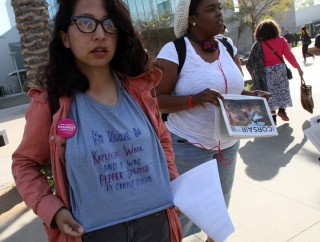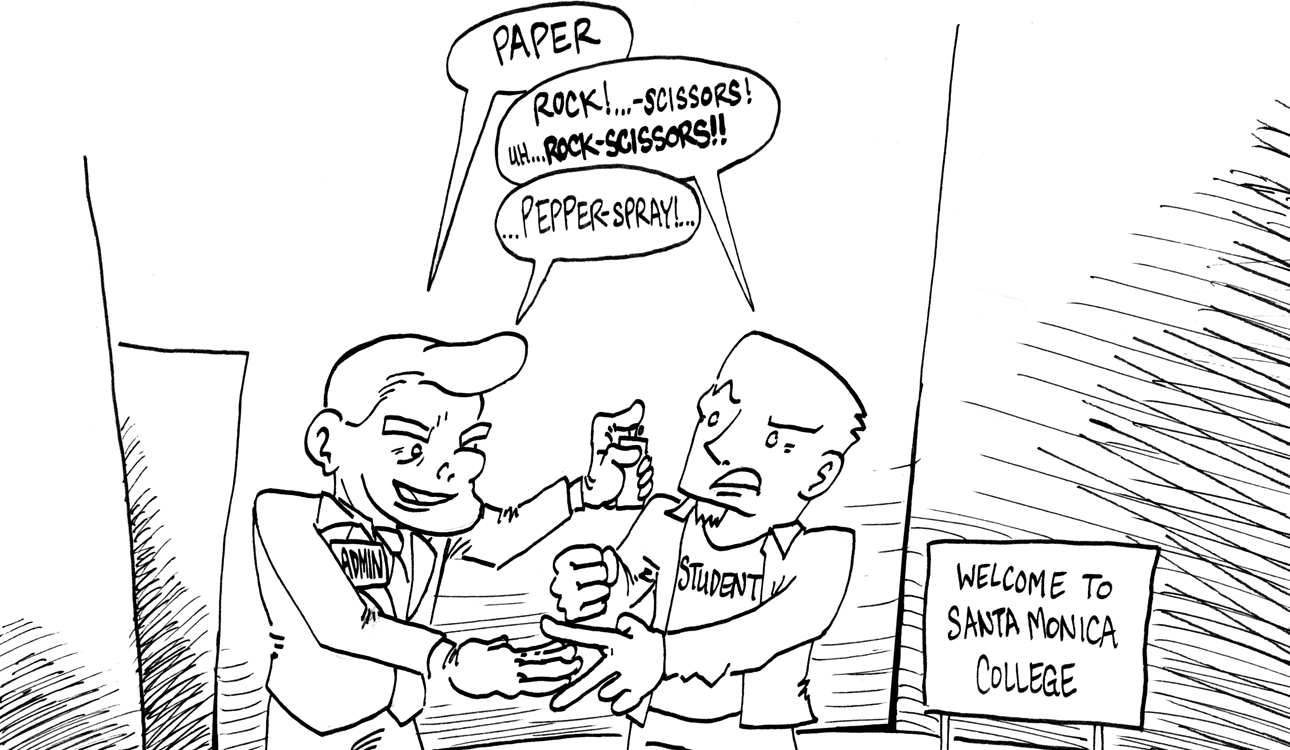

Associated Press
It’s hard to turn a blind eye when, for the second time in recent memory, college students in California have been pepper sprayed.
This time it happened last Wednesday at Santa Monica College. As many as 30 protesters were pepper sprayed as they tried to confront administrators over a set of proposed courses, which would cost nearly four times the college’s current tuition rate.
Administrators planned on instituting a new set of core classes, available to students after the normal set of classes fill up. The classes, however, run for $200 per semester unit (equivalent to a semester hour), which totals roughly four times the $46 per semester unit cost for in-state residents.
Unhappy and concerned that the new classes might create a two-tier system that favors wealthy students, students gathered outside a room last Wednesday where administrators discussed the plan. The protesters grew restless when only a few students were allowed in the meeting room, and they then forced their way into the room, prompting the administrators to call campus police.
To keep the protesters out of the meeting room, police resorted to pepper spray. Amateur video and Associated Press photos reached the Internet, and from there opinions have poured in on everything ranging from police brutality to the right to affordable or free education.
When you break down the causes and effects of the protest, the groups involved all could have handled the situation better.
We’ll start with the catalyst of the protest. We agree wholeheartedly with the protesters and hope this kind of class pricing doesn’t spread to other universities.
Imagine Baylor pricing its classes by semester hour, and then think about core classes being offered at two different prices. One set costs the normal $1,197 per semester hour, and the other core classes cost twice that amount.
Yes, there are students who could afford at least a few classes at $2,397 per hour, and they would pay that amount if it meant getting into a class that filled earlier in registration.
The thought of that worries us as we picture Baylor split into two tiers — one group that accepts they might have to wait a semester to take a particular class, and the other group that pays double to forgo the wait and take the class when they want.
Let’s also observe the method used to repel the Santa Monica protesters — it just wasn’t necessary. Students in the hallway outside the administrators’ meeting room also suffered from the pepper spray, and even administrators couldn’t escape the spray. That’s not hard to believe considering how easily pepper spray infiltrates a room and affects everyone in range.
Despite their legitimate concerns and right to protest, however, we can’t let some of these students off the hook. We understand the mob mentality inherent in an emotionally charged protest, but bursting into a restricted room isn’t the way to voice your concerns.
Start a petition. Contact local representatives. Take your story to media outlets always thirsty for stories dealing with injustices.
Using physical force might get people’s attention, but that can be negative, especially when there are more impactful ways to convey a message.
In the three days following the pepper spray incident, Santa Monica students did find less confrontational ways to protest the administration. Students protested outside the president’s office (without barging their way in) and wrote requests for an on-campus referendum.
The students’ dissent might work. On Friday, Santa Monica’s board of trustees voted to postpone the class pricing plan, and the board will further pursue community input before a decision is reached.
We hope Santa Monica makes the decision to keep its education priced fairly to all students. It’s the right thing to do.






